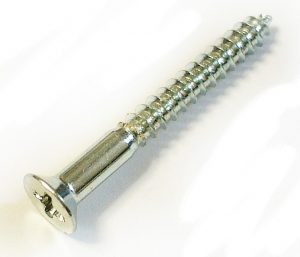 There are literally hundreds of different types of screws available, ranging in size, shape, material, and design. One of these types is the self-tapping screw, which live up to its namesake by tapping into its own hole as it is driven into the lumber or material. They are commonly used in the manufacturing and construction industry, as they save time by eliminating a step from the process. To learn more about self-tapping screws and how they work, keep reading.
There are literally hundreds of different types of screws available, ranging in size, shape, material, and design. One of these types is the self-tapping screw, which live up to its namesake by tapping into its own hole as it is driven into the lumber or material. They are commonly used in the manufacturing and construction industry, as they save time by eliminating a step from the process. To learn more about self-tapping screws and how they work, keep reading.
Self-tapping screws work by cutting into the thread of the screw; thus, creating a flute and cutting edge, much like a tap. This is in stark contrast to traditional machine screws, which typically require a pilot hole to be driven through. With a self-tapping screw, it automatically creates the pilot hole as it’s driven into the material, eliminating the need for a dedicated pilot hole. And with one step out of the way, it promotes greater efficiency and productivity.
The mechanism behind self-tapping screws varies depending on the material that it is being driven into. For softer materials, such as wood or soft plastic, the screw may feature a tapering tip that forms of a gimlet point. This tip then displaced the material as it is being driven, creating a pilot hole as it works through the material. Keep in mind, however, that the hardness and depth of the substrate must be within reasonable limits; otherwise, the self-tapping screw may fail to penetrate all the way through.
It’s important to note that some self-tapping screws are also classified as self-drilling, meaning they feature a drill-like tip that combines the fastener installation and drilling action into a single process. This makes them particularly useful in applications involved hard substrates, such as assembly lines, carpentry and construction roofing.
Just because a self-tapping screw can be driven into materials without first drilling a pilot hole doesn’t necessarily mean that this is the best approach to using them. If the material is rough, for instance, it may prove helpful to drill a pilot hole beforehand. Doing so ensures the screw will be positioned in the desired area, and that it will enter into the material smooth and without restriction. If the pilot hole is too large, however, the self-tapping screw’s threads may have trouble attaching to the material. So when drilling the pilot hole, err on the side of caution by making it smaller than the necessary width.
